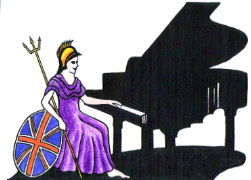Learn to Play the Piano Make Music
Piano Teacher Jazz lessons Theory in Didsbury, Manchester M20

UK Piano Page


Learn to play piano Mindfully at Manchester Piano Tutor. I teach children (from age 6) and adults from beginners and rusty pianists to intermediate. Play for your own pleasure or for ABRSM exams. I have 100% pass rate, all students high merit or distinction. I include scales, studies, aural and sight reading techniques. Learn on a Bechstein grand piano in Didsbury.
Disclosure and Barring Service: yes
Qualification: MA. ABRSM Grade 8; Into to Teaching; Intro to Teaching Jazz
Disclosure and Barring Service: yes
Qualification: MA. ABRSM Grade 8; Into to Teaching; Intro to Teaching Jazz
Hampstead, London
England
Experienced piano teacher and accompanist
Great Harwood, Lancashire
England
I teach piano & violin from my own home in Great
Music Festival for performers and guests Our 10th
18-06-2022 01:30PM
The Morecambe Bay Piano Group was set up to extend
11-12-2021 02:00PM
The Morecambe Bay Piano Group was set up to extend
08-01-2022 02:00PM
The Morecambe Bay Piano Group was set up to extend
12-02-2022 02:00PM
Tuning Temperaments
How many piano tuning temperaments are there?
There are countless variations, but most fall within three major categories;
1. Meantone, which generally concentrated the dissonance into a few unusable intervals (often called "wolf" intervals), so that the others could be Just. These are often called "restrictive" tunings, since there are certain intervals that are not usable. Good intervals are really good, bad ones are really bad. The Meantone era was approx. 1400-1700
2. Well-Temperament, which gives more consonance to the most often used keys, and more dissonance to the lesser used ones. Though not equal, these tunings are "non-restrictive" because all intervals can be used. The intervals range from Just to barely acceptable. Well-temperament refers to a genre, not a specific tuning. The Well-Tempered era is approx. 1700-1880.
3. Equal Temperament, which spreads the dissonance equally among all intervals.
There is no difference in consonance or dissonance between any keys, thus, there are no good ones or bad ones. Equal temperament represents a complete average. Dates of its acceptance are debated, but there is ample evidence that it was widely available by 1900 and is the predominate tuning on keyboards, today.
r.